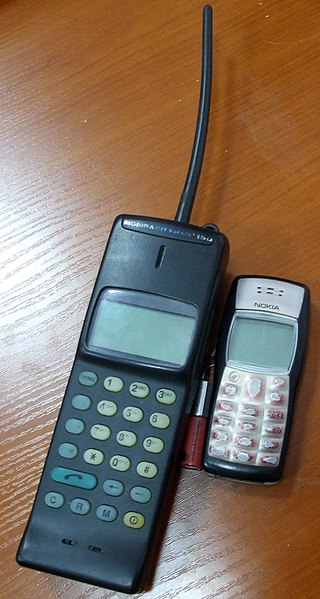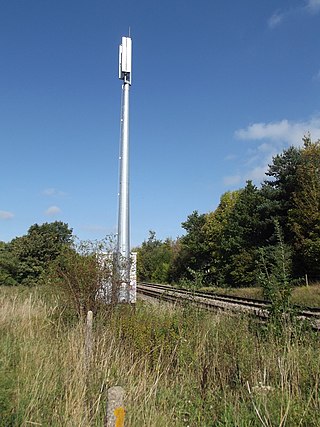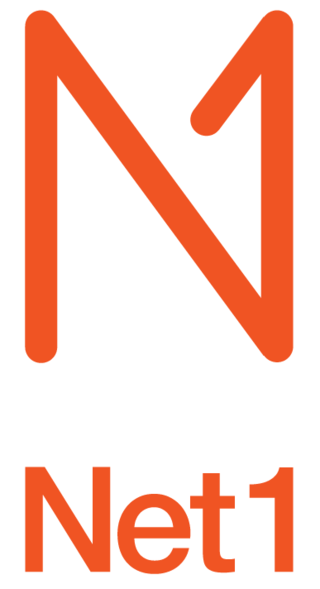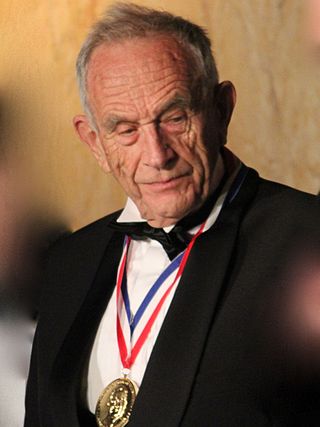Related Research Articles

The Global System for Mobile Communications (GSM) is a standard developed by the European Telecommunications Standards Institute (ETSI) to describe the protocols for second-generation (2G) digital cellular networks used by mobile devices such as mobile phones and tablets. GSM is also a trade mark owned by the GSM Association. GSM may also refer to the Full Rate voice codec.
Telecommunications in Slovakia includes fixed and mobile telephones, radio, television, and the Internet.

NMT is an automatic cellular phone system specified by Nordic telecommunications administrations (PTTs) and opened for service on 1 October 1981. NMT is based on analogue technology and two variants exist: NMT-450 and NMT-900. The numbers indicate the frequency bands used. NMT-900 was introduced in 1986 and carries more channels than the older NMT-450 network.

A cellular network or mobile network is a telecommunications network where the link to and from end nodes is wireless and the network is distributed over land areas called cells, each served by at least one fixed-location transceiver. These base stations provide the cell with the network coverage which can be used for transmission of voice, data, and other types of content. A cell typically uses a different set of frequencies from neighboring cells, to avoid interference and provide guaranteed service quality within each cell.
The signalling system used on the rail transport in Norway is regulated by the Regulations of December 4, 2001 no. 1336 about signals and signs on the state's railway network and connected private tracks.
GSM frequency bands or frequency ranges are the cellular frequencies designated by the ITU for the operation of GSM mobile phones and other mobile devices.

GSM-R, Global System for Mobile Communications – Railway or GSM-Railway is an international wireless communications standard for railway communication and applications.
1G refers to the first generation of cellular network (wireless) technology. These are mobile telecommunications standards that were introduced in the 1980s and were superseded by 2G. The main difference between these two mobile cellular generations is that the audio transmissions of 1G networks were analog, while 2G networks were entirely digital.

The European Train Control System (ETCS) is the signalling and control component of the European Rail Traffic Management System (ERTMS). It is a replacement for legacy train protection systems and designed to replace the many incompatible safety systems currently used by European railways. The standard was also adopted outside Europe and is an option for worldwide application. In technical terms it is a type of positive train control (PTC).

The New Measurement Train (NMT), also known as the Flying Banana, is a specialised train which operates in the United Kingdom to assess the condition of track so that engineers can determine where to work. It is a specially converted InterCity 125, consisting of five Class 43 power cars and five or six Mark 3 carriages. It can check the condition of most main lines and some secondary routes operating on a four weekly cycle. This cycle replaced its original 13-week cycle after the introduction of the Plain Line Pattern Recognition (PLPR) Design Patrolling Program.
The Åsta accident was a railway accident that occurred at 13:12:25 on 4 January 2000 at Åsta in Åmot, south of Rena in Østerdalen, Norway. A train from Trondheim collided with a local train from Hamar on the Røros Line, resulting in an explosive fire. 19 people were killed, while 67 survived the accident.
The Norwegian National Rail Administration was a government agency responsible for owning, maintaining, operating and developing the Norwegian railway network, including the track, stations, classification yards, traffic management and timetables. Safety oversight was the duty of the Norwegian Railway Inspectorate, while numerous operating companies run trains on the lines; the largest being the state owned passenger company Vy and the freight company CargoNet.

The Radio Telephone Network C, was a first generation analog cellular phone system deployed and operated in Germany by DeTeMobil. It utilized the C-450 standard, originally developed by Siemens AG, and was the third and last update of a series of analog mobile phone systems used primarily within Germany, superseding the B-Netz and the A-Netz before it. It has been decommissioned, replaced by both the newer D-Netz and E-Netz systems, both based on GSM standards and operating on 900 MHz and 1800 MHz bands respectively.

Net 1 is a Nordic telecommunications company operating 4G LTE mobile broadband networks in Norway, Sweden and Denmark since 2015, in Indonesia since 2017, and in the Philippines since 2019. Since February 2019, the Swedish operations of Net 1 are owned by Teracom, while the Danish operations of Net 1 are owned by Cibicom A/S since 2020. The Norwegian operations are owned by Ice group.
British Rail Telecommunications was created in 1992 by British Rail (BR). It was the largest private telecoms network in Britain, consisting of 17,000 route kilometres of fibre optic and copper cable which connected every major city and town in the country and provided links to continental Europe through the Channel Tunnel.
Scanet is a defunct, analog train radio system used by the Norwegian State Railways (NSB) and later the Norwegian National Rail Administration. The system was developed by Ascom Radiocom and was installed on the primary railways in Norway between 1993 and 1996. The system allows radio communication between a train dispatcher, and train drivers and other users involved in railway operations. Scanet has three main components: the central traffic control, base stations which are located along the railway lines, and mobile station located in the trains. The system is further connected to the internal railway telephone network, where it functions like a regular telephone. Scanet is also connected to the automatic train control system.
NSI-63 is a railway signaling system used for interlocking on the Norwegian railway network. It is based on relays and was developed by Norsk Signal Industri for the Norwegian State Railways (NSB) during the early 1960s. The systems are installed at railway stations and passing loops and consist of single relays built form drawings. The system is simple, robust and economical for smaller stations on single-track railways. The system makes use of track circuits for train detection.
The Norwegian Public Safety Network is a public safety network system based on Terrestrial Trunked Radio (TETRA). Nødnett is implemented by the Directorate for Emergency Communication. The network is primarily used for internal and interdisciplinary communication by the police, fire departments and health services. Nødnett is also used by several organisations participating in rescue and emergency work. Planning of the network started in 1995 and in 2006 the contract to build it was awarded to Nokia Siemens Networks. As Nokia Siemens Networks was unable to complete the contract, it was passed on to Motorola Solutions in 2012. The critical infrastructure of Nødnett was finished and was operational in all districts of mainland Norway by December 1, 2015.

Dr. Thomas Haug is an electrical engineer known for developing the cellular telephone networks.
Cellular frequencies are the sets of frequency ranges within the ultra high frequency band that have been assigned for cellular-compatible mobile devices, such as mobile phones, to connect to cellular networks. Most mobile networks worldwide use portions of the radio frequency spectrum, allocated to the mobile service, for the transmission and reception of their signals. The particular bands may also be shared with other radiocommunication services, e.g. broadcasting service, and fixed service operation.
References
- 1 2 Solberg, Bjørn Olav (1994). "Train radio system for Norwegian State Railways" (PDF). Telektronikk. Telenor (4): 73–81. Archived from the original (PDF) on 18 July 2011. Retrieved 24 October 2010.
- ↑ Melsom, Jens (10 January 2002). "Kommentarer til høring– Fremtidig bruk at NMT-450 frekvensbåndene" (PDF) (in Norwegian). Norwegian Post and Telecommunications Authority. Archived from the original (PDF) on 24 July 2011. Retrieved 24 October 2010.
- ↑ Enghaug, Paul (11 February 2002). "NSBs nye togradio holder bare fem år". Aftenposten (in Norwegian). p. 11.
- ↑ "Høring – Endring av togframføringsforskriften og signalforskriften bl.a. som følge av innføring av GSM-R som togradio mv" (in Norwegian). Norwegian Railway Inspectorate. 6 July 2007. Archived from the original on 24 October 2010. Retrieved 24 October 2010.
- ↑ "GSM-R tatt i bruk som togradio". Computer Weekly . 1 November 2007. Retrieved 24 October 2010.
- ↑ "Railway Statistics 2004" (PDF). Norwegian National Rail Administration. 2005. p. 40. Archived from the original (PDF) on 25 August 2012. Retrieved 17 November 2010.
- ↑ Norwegian National Rail Administration (2009). "Railway Statistics 2008" (PDF). p. 42. Archived from the original (PDF) on 22 November 2010. Retrieved 8 November 2010.